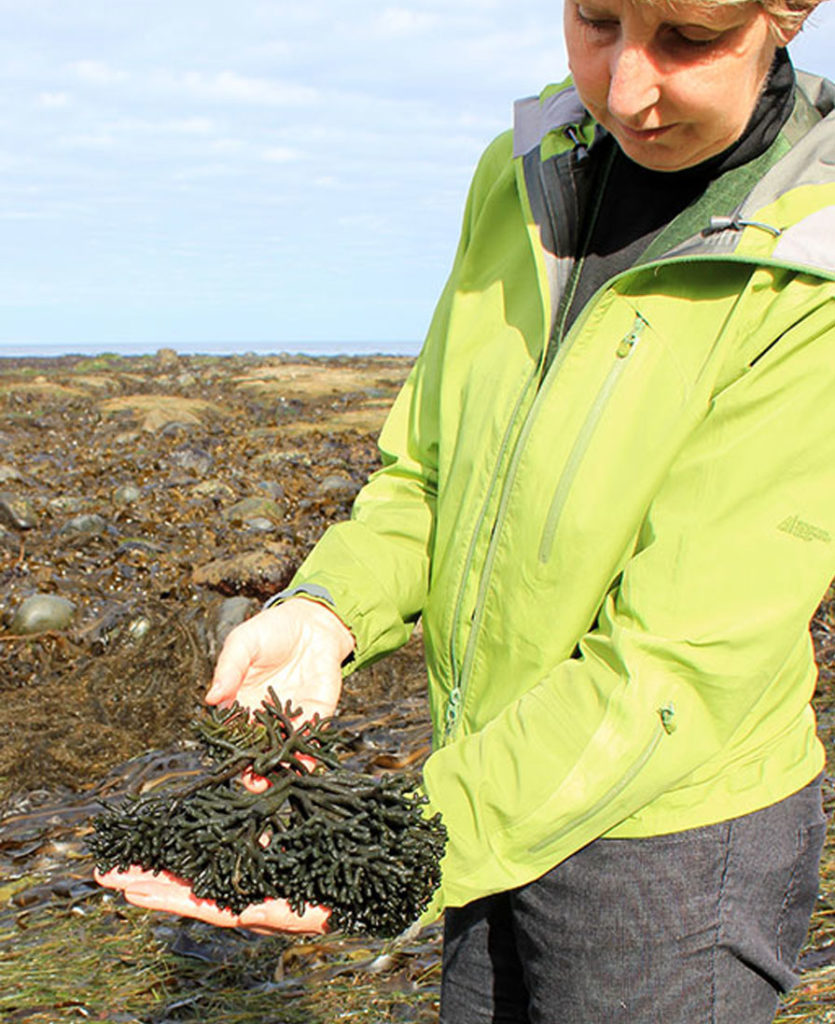Diane Bernard (a.k.a. Canada’s “Seaweed Lady.”) reviews the benefits of seaweed:

There are thousands of varieties of seaweeds in the oceans – on Canada’s west coast alone there are an estimated 600. But like skin care products, not all seaweeds are equally beneficial.
Health Benefits of Seaweed
Some seaweeds, such as Alaria, Egregia, Ulva lactuca, Iridaea, Rockweed, Porphyra, Nereocystis Hedophylum and others, have been scientifically proven to be rich in vitamins A1, B1, B2, B6, B12, C, E, K, pantothenic acid, folic acid, and niacin. They are an important supply of 60 trace elements and an excellent source of over 12 minerals, especially potassium, calcium, magnesium, phosphorus, iron, zinc and manganese.
Nutritional studies have isolated components of some seaweeds which lower blood pressure, prevent arteriosclerosis, and combat tumors. Other seaweeds are known for their anti-inflammatory effects and are reported to be beneficial in the treatment of high blood pressure and aid in the treatment of such skin conditions as eczema and psoriasis.
Seaweeds are high in nutrients, low in fat
Seaweeds are low in fat and have little or no caloric energy. Seaweed is a highly nutritious food that promotes health and longevity. And, just as eating fruits and vegetables fresh results in maximum nutritional value, so does eating fresh seaweed.
When determining the quality of a marine-based treatment or product ask yourself: Does it smell like seaweed? Seaweed has a very strong ocean smell NOT a fishy smell. If it doesn’t smell or feel like seaweed – perhaps it’s not true seaweed? Seaweeds, afterall, are not white, sterile or perfumed. You need to look for the wholesomeness, the depth, colour and texture that makes seaweed such an extraordinary nutritional plant. There are marine/algae spa products out there that use industrially dried, bleached kelp with the nutrients stripped out. And some products are made with spirulina and blue/green algae which are not seaweeds at all but fresh water plants grown in tanks or lakes. Because they are grown in an entirely different environment, they do not have the same trace mineral elements and other nutrients of those plants that grow in an ocean garden.
Despite scientific research there are still barriers to the acceptance of seaweed as a nutritious food and skin care ingredient. North Americans’ general perception is that seaweeds are strong smelling and oozy but keep in mind that the tangle of kelp you find washed up on shore is the ocean’s compost is NOT the seaweeds to be eaten or applied to our bodies. Just as you wouldn’t judge a vegetable or flower garden by the look, smell or texture of a compost pile, we shouldn’t judge the ocean garden by the composted dead seaweed on the shore.
Check list for consumers buying seaweed products:
o Check the ingredient list to make certain that seaweed is one of first 3 ingredients
o If it has a quasi fishy smell it has probably been harvested from the shore which is not good – that’s the compost pile of ocean garden. It should be harvested direct from the sea in low tide, via boats during peak growing season or through diving to the ocean floor. Seaweed can have a strong smell but it’s not fishy, it’s more ocean
o If the label on a product says “seaweed extract” you have to ask yourself – how many steps were in the extraction process and did that remove all the nutrients? There should only be two steps in processing – the harvesting (or gathering of the seaweed), then the grinding and mixing it in with other ingredients to make the product.
Canada’s Seaweed Lady, Diane Bernard is founder of SeaFlora Skin Care

You may also be interested in benefits of seaweed from yet another perspective.
Other articles for Wellness Everyday




